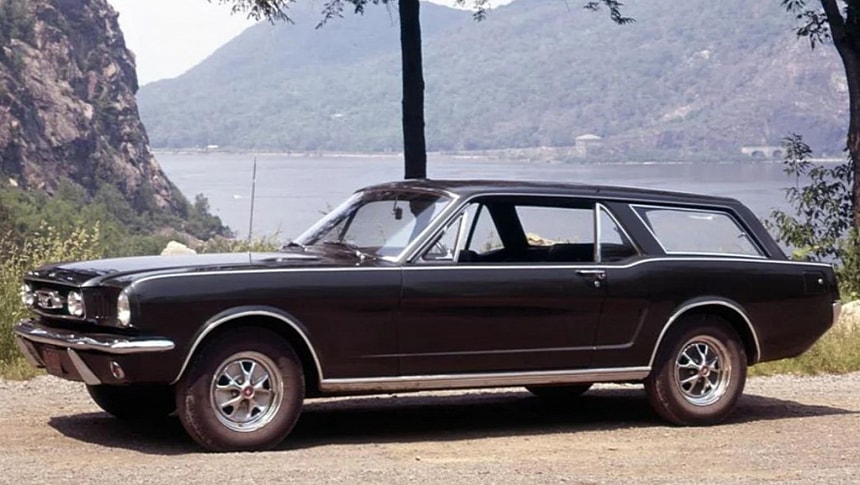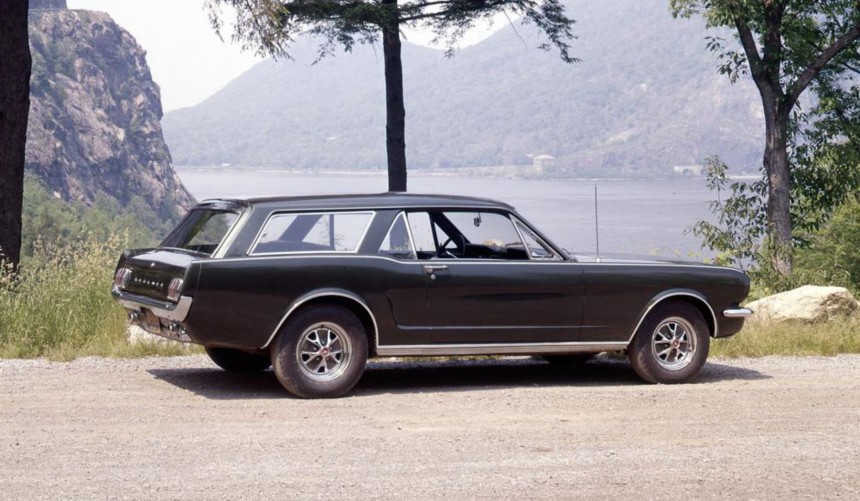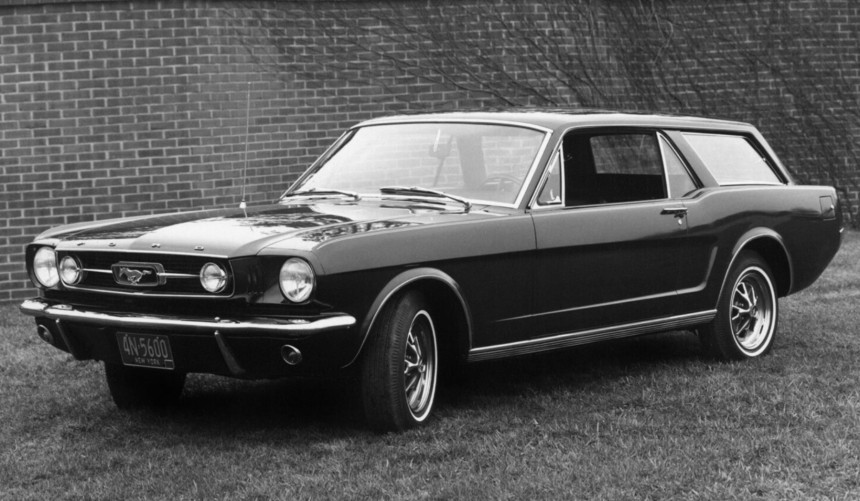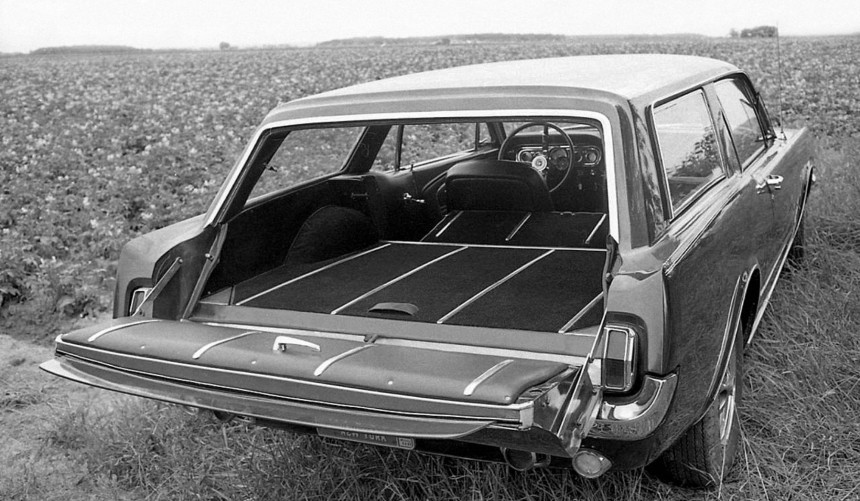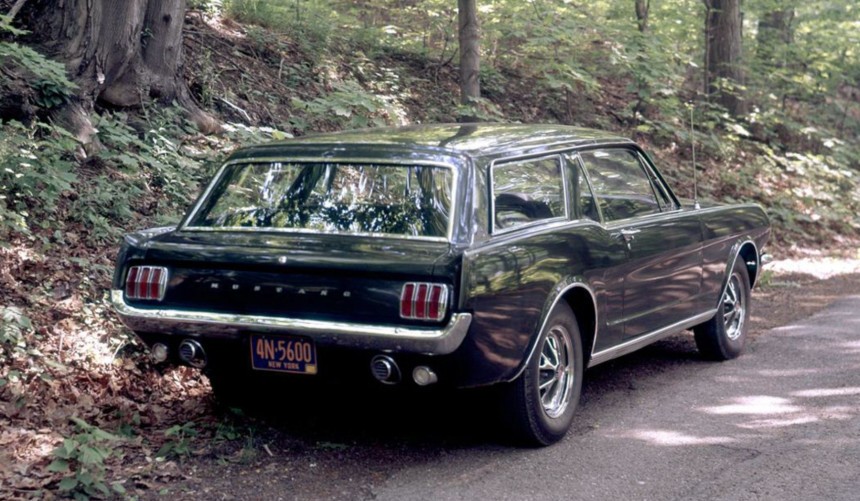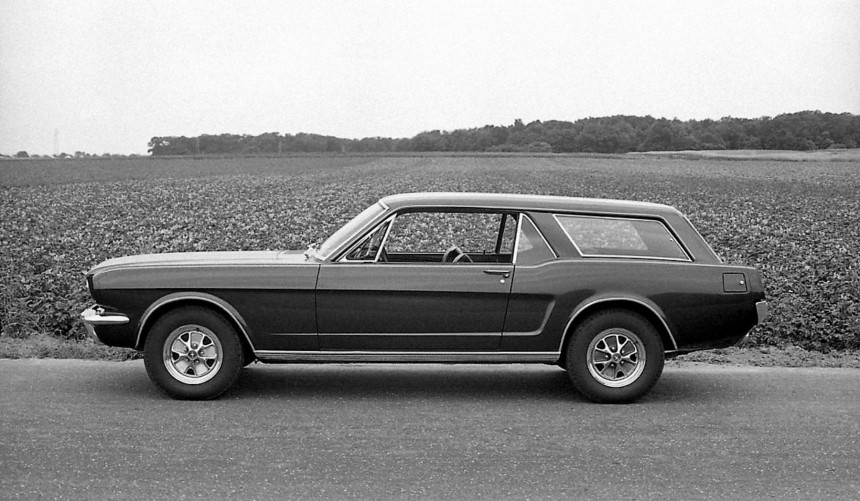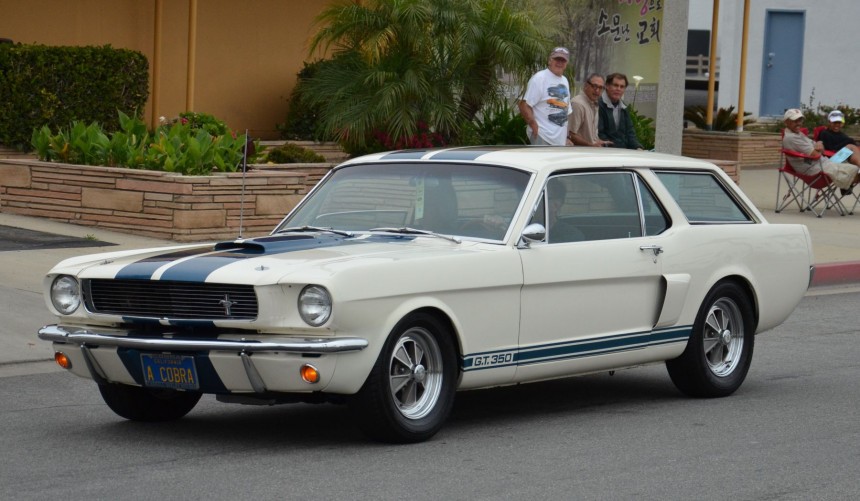Also known as the Intermeccanica Mustang, this 1966 design proposal never made it into production but has inspired enthusiasts ever since.
In the spring of 1964, at the famous World's Fair held in Flushing Meadows, New York, Ford unveiled an all-new model called Mustang.
With a Euro-inspired design, a multitude of options, and an attractive price tag, the new car became an instant sensation.
During the first generation, which spanned from April 1964 to June 1973, the 'Stang broke several sales records, coined the new pony car segment, and became an automotive icon.
Though it was initially available as a two-door coupe or convertible (and later a two-door fastback), the team behind the original Mustang developed a multitude of fascinating concepts, such as a two-seat fastback or mid-engine sports car, that never made it into production.
Apart from the two-seat "Shorty," which was one of the concepts that many wish made it into production, the two-door wagon (or shooting brake) version of the 'Stang is another prototype that continues to fascinate Mustang enthusiasts and lives on through a multitude of awesome replicas.
Some car people (including myself) have a soft spot for sporty wagons that blend practicality with performance into an atypical yet awesome-looking package.
One of the very first cars that turned people into wagon enthusiasts was the 1955-1957 Chevrolet Nomad, a two-door station wagon available with a potent 283-ci (4.6-liter) V8.
Barney Clark, an executive with J. Walter Thompson, Ford's main advertising agency, independent designer (and Car and Driver columnist) Robert Cumberford, and car fanatic Jim Licata were three Nomad fans who also developed an acute fondness for the new Mustang.
While Ford only went as far as developing a full-size clay model of a Mustang wagon, in 1965 the trio decided to join forces and take it one step further by building a fully functional car.
In those days, wealthy enthusiasts who wanted to have a flawlessly built one-off approached one of the renowned Italian design houses to get the job done, and that's exactly what Clark, Cumberford, and Licata did.
They contacted Turin-based Construzione Automobili Intermeccanica, and after purchasing a stock, 289-powered 1965 hardtop coupe, they shipped it to Italy.
Founded in 1959 by Hungarian-born Canadian Frank Reisner, Intermeccanica wasn't as famous as other Italian coachbuilders like Vignale, Zagato, Bertone, or Pininnfarina, but since its inception, the company quickly rose through the ranks thanks to its exciting products.
At first, Intermeccanica produced racing kits for European production cars, then started building bespoke race cars.
By the mid-1960s, the company added a series of fascinating road cars to its resume, including the exquisite Apollo GT.
Moreover, since Cumberford was working on a project with the Italian company at the time, Intermeccanica was the perfect choice to turn the hardtop Mustang into a sporty two-door wagon without spending too much money on the project.
In Turin, the 'Stang was stripped off to the bare frame, and after an extensive 11-month transformation process, it received a custom wagon roof with brand-new side windows, a conventional, bottom-hinged tailgate complete with a retractable window, folding rear seats, a new cargo floor, and several chassis reinforcements.
Though it's unclear whether the three enthusiasts got any help from the Mustang design team, who were developing the clay model during the time that Intermeccanica was converting the hardtop into a wagon, the results were very similar.
The one-off wagon retained all of the Mustang's original design cues, including the rear bumper and taillights, but the fuel filler was relocated to the right quarter panel.
Finished in Ivy Green Metalic, the wagon designed by Cumberford and put together by the experts at Intermeccanica looked so good from every single angle that one could swear it came out of Ford's own Dearborn plant.
Apart from the desire to build a sporty-looking wagon based on the beautiful 'Stang, one of the main objectives of this project was to improve the legendary pony car's handling.
Heavily based on the existing Falcon and sharing much of its chassis, including the leaf-sprung rear suspension, the original Mustang looked amazing, but its handling was far from perfect.
It generally felt nose-heavy, and on a bumpy road or through sharp turns, the car's rear end tended to slide around, so Clark, Cumberford, and Licata reasoned that adding some weight in the back would help solve this issue.
As it turned out, they were right. While its appearance was (and still is debatable), there was no question that the one-off Intermeccanica wagon Mustang handled better than its factory-built hardtop, convertible, and fastback counterparts, especially since it was now fitted with performance-oriented Koni shocks.
After it was finished, the one-off returned to the US, where it was first shown to the public on the cover of the October 1966 issue of Car and Driver magazine.
Soon, it became one of the main talking points among Mustang enthusiasts nationwide, and everyone was wondering if Ford would add this body style to the official lineup for the upcoming model year.
Its three creators hatched a plan to pitch the car to Ford, demonstrating its advantages and if management dismissed their idea (which eventually happened), they were determined to sell Mustang wagons themselves.
To that end, they contacted Ford's go-to motorsport and performance partners, Holman-Moody, to handle the conversions.
Unfortunately, after they did the math, the trio realized that the conversion costs would've pushed the sticker price well out of conventional Mustang territory, so the plans for an independent production run were scrapped.
The original Intermeccanica wagon was eventually lost. As of today, it's unknown if it was destroyed or if it's still around, gathering dust in a warehouse and waiting to be rediscovered.
Nevertheless, it inspired many enthusiasts to build their own first-generation two-door wagons, such as the Shelby GT350 wagon replica shown above.
Built by auto restorer and customizer Bob Hoshiko, this amazing ride was inspired by the Intermeccanica Mustang and became a start at Mustang meets across the country.
Like the original, it was converted from a hardtop coupe but received Shelby GT350 components, including a Ford Hi-Po 289 V8 that Hoshiko tuned to the exact spec of the genuine Shelby engine.
Apart from this famous recreation, there are many other first-generation wagon conversions out there, all of which were inspired by the fascinating Intermeccanica Mustang.
You can take a virtual tour of one of these fantastic replicas in the YouTube video below by The Drive with Alan Taylor.
With a Euro-inspired design, a multitude of options, and an attractive price tag, the new car became an instant sensation.
During the first generation, which spanned from April 1964 to June 1973, the 'Stang broke several sales records, coined the new pony car segment, and became an automotive icon.
Though it was initially available as a two-door coupe or convertible (and later a two-door fastback), the team behind the original Mustang developed a multitude of fascinating concepts, such as a two-seat fastback or mid-engine sports car, that never made it into production.
Apart from the two-seat "Shorty," which was one of the concepts that many wish made it into production, the two-door wagon (or shooting brake) version of the 'Stang is another prototype that continues to fascinate Mustang enthusiasts and lives on through a multitude of awesome replicas.
The brainchild of wagon enthusiasts
One of the very first cars that turned people into wagon enthusiasts was the 1955-1957 Chevrolet Nomad, a two-door station wagon available with a potent 283-ci (4.6-liter) V8.
Barney Clark, an executive with J. Walter Thompson, Ford's main advertising agency, independent designer (and Car and Driver columnist) Robert Cumberford, and car fanatic Jim Licata were three Nomad fans who also developed an acute fondness for the new Mustang.
While Ford only went as far as developing a full-size clay model of a Mustang wagon, in 1965 the trio decided to join forces and take it one step further by building a fully functional car.
A dream born in the US and turned into reality in Italy
They contacted Turin-based Construzione Automobili Intermeccanica, and after purchasing a stock, 289-powered 1965 hardtop coupe, they shipped it to Italy.
Founded in 1959 by Hungarian-born Canadian Frank Reisner, Intermeccanica wasn't as famous as other Italian coachbuilders like Vignale, Zagato, Bertone, or Pininnfarina, but since its inception, the company quickly rose through the ranks thanks to its exciting products.
At first, Intermeccanica produced racing kits for European production cars, then started building bespoke race cars.
By the mid-1960s, the company added a series of fascinating road cars to its resume, including the exquisite Apollo GT.
Moreover, since Cumberford was working on a project with the Italian company at the time, Intermeccanica was the perfect choice to turn the hardtop Mustang into a sporty two-door wagon without spending too much money on the project.
Nearly a year's worth of extensive modifications
Though it's unclear whether the three enthusiasts got any help from the Mustang design team, who were developing the clay model during the time that Intermeccanica was converting the hardtop into a wagon, the results were very similar.
The one-off wagon retained all of the Mustang's original design cues, including the rear bumper and taillights, but the fuel filler was relocated to the right quarter panel.
Finished in Ivy Green Metalic, the wagon designed by Cumberford and put together by the experts at Intermeccanica looked so good from every single angle that one could swear it came out of Ford's own Dearborn plant.
A better-handling Mustang
Heavily based on the existing Falcon and sharing much of its chassis, including the leaf-sprung rear suspension, the original Mustang looked amazing, but its handling was far from perfect.
It generally felt nose-heavy, and on a bumpy road or through sharp turns, the car's rear end tended to slide around, so Clark, Cumberford, and Licata reasoned that adding some weight in the back would help solve this issue.
As it turned out, they were right. While its appearance was (and still is debatable), there was no question that the one-off Intermeccanica wagon Mustang handled better than its factory-built hardtop, convertible, and fastback counterparts, especially since it was now fitted with performance-oriented Koni shocks.
A successful debut and plans for production
Soon, it became one of the main talking points among Mustang enthusiasts nationwide, and everyone was wondering if Ford would add this body style to the official lineup for the upcoming model year.
Its three creators hatched a plan to pitch the car to Ford, demonstrating its advantages and if management dismissed their idea (which eventually happened), they were determined to sell Mustang wagons themselves.
To that end, they contacted Ford's go-to motorsport and performance partners, Holman-Moody, to handle the conversions.
Unfortunately, after they did the math, the trio realized that the conversion costs would've pushed the sticker price well out of conventional Mustang territory, so the plans for an independent production run were scrapped.
Lost but not forgotten
Nevertheless, it inspired many enthusiasts to build their own first-generation two-door wagons, such as the Shelby GT350 wagon replica shown above.
Built by auto restorer and customizer Bob Hoshiko, this amazing ride was inspired by the Intermeccanica Mustang and became a start at Mustang meets across the country.
Like the original, it was converted from a hardtop coupe but received Shelby GT350 components, including a Ford Hi-Po 289 V8 that Hoshiko tuned to the exact spec of the genuine Shelby engine.
Apart from this famous recreation, there are many other first-generation wagon conversions out there, all of which were inspired by the fascinating Intermeccanica Mustang.
You can take a virtual tour of one of these fantastic replicas in the YouTube video below by The Drive with Alan Taylor.
